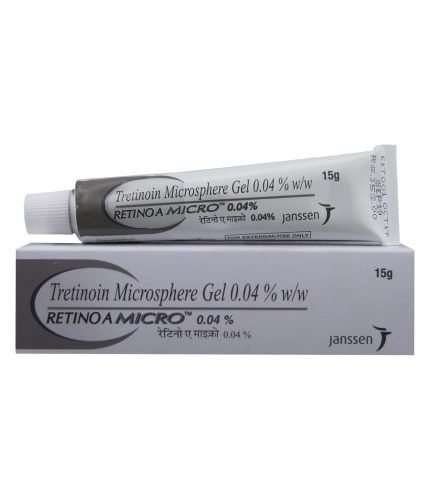Introduction:
This is a common type of autoimmune disease. This condition causes your body’s immune system to overreact to gluten, which results in certain symptoms.
In case you are unaware, gluten is primarily a complex protein abundant in barley and rye. This article will discuss the foods you should avoid when experiencing this problem.
Small intestine problems are probably the immune system’s reaction. If this condition persists without treatment, it significantly impacts the small intestine’s capacity to absorb and digest nutrients. Doctors refer to this condition as malabsorption.
Over time, you may experience more serious concerns like anemia, weight loss, exhaustion, diarrhea, and other disorders.
In the next sections, you will also gain an understanding of some of the difficulties associated with celiac disease.
When gluten is consumed, people with celiac disease experience pain and inflammation in their digestive tract. The immune system’s reaction to gluten proteins is a feature of this autoimmune disease.
Many people with these are unaware that they have it. According to researchers, just about 1 in 5 individuals with the illness ever become aware that they have it.
The symptoms of intestinal damage might differ greatly from person to person and occur gradually. Therefore, the diagnosis may not come for years.
What Is Celiac Disease?
This hereditary autoimmune disease makes your body respond negatively to the gluten protein. The presence of gluten in your digestive tract causes your immune system to create antibodies against it. Your small intestine’s lining is harmed by these antibodies. When your small intestine’s mucosa is damaged, it becomes less able to absorb nutrients from meals, which leads to nutritional deficiencies.
Grain proteins, especially those of wheat, barley, and rye, include gluten. From bread and cereals to pasta and baked products, these grains—especially wheat—make up a large portion of the typical Western diet. Aside from that, gluten frequently shows up as an ingredient in unexpected culinary items including sauces, soups, and bottled goods. Rye or barley are typically used to make beer.
Gluten-sensitive enteropathy, no tropical sprue, and celiac sprue are other names for the illness.
The body overreacts to gluten when a person with celiac disease consumes gluten-containing foods or beverages. This harms their villi, which are tiny projections that resemble fingers and run along the small intestine’s wall. Damage to your villi impairs the small intestine’s ability to absorb nutrients from food. In the long run, this may result in malnourishment and symptoms like mood swings, miscarriage, and weak bones.
Most celiac disease sufferers are unaware that they have the condition. As little as 20% of patients receive the correct diagnosis, according to researchers. Intestinal injury occurs gradually, and symptoms differ greatly from person to person.
- Sprue
- Nontropical Sprue
- Gluten-Sensitive Enteropathy
The immune system’s reaction to gluten causes toxins in celiac disease. The villi are microscopic projections inside your small intestine that resemble fingers, and these toxins damage them. Damage to the villi prevents your body from absorbing nutrients from food. In addition to hunger, this can cause irreversible intestinal damage and other major health issues.
What Physical Symptoms Does Celiac Disease Cause?
This has an impact on your small intestine. Proteins like gluten and the majority of other nutrients from your diet are absorbed here. Gluten, however, causes an immunological reaction in the small intestine of those with celiac disease. The gluten molecules are destroyed by the inflammatory cells and antibodies your immune system produces. The mucous membrane that lines your small intestine is harmed by these cells.
Your small intestine’s mucosa is made up of multiple folds and projections that resemble fingers, called villi. It would completely enclose a tennis court if stretched out. During digestion, the folds and projections expand the surface area to absorb as many nutrients as feasible. However, the surface area is reduced as a result of the erosion and flattening of these projections by immune cells brought on by celiac disease.
In people with celiac disease, the gluten protein causes an immunological reaction in the small intestine. Over time, this reaction causes malabsorption, a condition in which the lining of your small intestine is damaged and unable to absorb nutrients.
The Diagnosis: What to anticipate
Type 1 diabetes, autoimmune liver disease, thyroid disorders, Down syndrome, Turner syndrome, or are all associated with an increased risk of developing celiac disease. Therefore, you should also request a celiac disease test from your doctor if you have any of these symptoms.
- Need for Gluten Before Tests
A series of tests will be necessary to determine whether you have celiac disease. You must consume gluten for some of these tests to be reliable.
A “gluten challenge” plan may be prescribed by your doctor if you are following a gluten-free diet before these tests. For eight weeks, you will consume two servings or more of gluten each day.
- Tests for DNA and Blood
A blood test. Your blood is tested for specific antibodies using this method. The majority of people with celiac disease have higher-than-normal amounts of these in their blood.
HLA genetic test. The HLA-DQ2 and HLA-DQ8 genes are sought after by this. You’re not likely to have celiac disease if you don’t have them. A swab of the inside of your cheek, a saliva test, or a blood test could be performed.
You cannot be diagnosed with celiac disease with these tests alone.
- The Endoscopy
Your doctor can examine for damage to your small intestine using this treatment. A camera-equipped scope will be inserted via your mouth, down your esophagus, and into your digestive system. A little sample of tissue from the lining of your small intestine will probably be taken by your doctor for additional research. It’s known as a biopsy by doctors.
Your doctor will specifically examine the small intestine’s lining for microscopic projections called villi that resemble fingers. An indication of this is damaged villi.
You can get an endoscopy in a doctor’s office, and it takes roughly fifteen minutes.
Your doctor may believe that you have “non-celiac gluten sensitivity” if your biopsy results indicate that you do not have celiac disease but you still experience symptoms related to gluten. Even though you do not have celiac disease, this indicates that your body does not process gluten well.
Are Celiac Disease Symptoms Severe?
Injuries to the small intestine can have detrimental effects. The mucosa of your small intestine allows nutrients from your food to be absorbed. The mucosa cannot absorb nutrients as it should if it is damaged. We call this malabsorption. Malnutrition is one of the various illnesses that can result from a lack of certain nutrients. Stunted growth and development in children can result from it.
Celiac Disease: Who Gets It?
The majority of people with this trait are of Northern European ancestry. According to estimates, 1% of people in North America and Europe are impacted. If you have a parent or kid who has the condition, you have a 10% risk of getting it yourself. Approximately 97% of individuals with celiac disease have a detectable gene mutation linked to the condition.
Which Other Risk Factors Are Involved?
The prevalence of this is higher in those who have Down syndrome or other hereditary chromosomal problems. People who have certain other autoimmune diseases are likewise more likely to get it. In addition to having a mechanism of triggering one another, these disorders frequently share genes.
Indications That You Have Celiac Disease
Therefore, how can you determine if gluten causes a strong immunological response in your body? The following list of symptoms could point to this problem:
- Diarrhea that is frequently incurable in a matter of days
- Fatigue from even minor labor or work
- After even a small meal, bloating and gas
- I’m experiencing abdominal and another stomach ache.
- Frequently, feelings of nausea and vomiting
- Sometimes people get constipated.
Now, this problem might occasionally manifest as symptoms that are not directly related to your digestive system. These problems, for instance, are
- Lethargy
- Osteoporosis and other disorders cause significant bone loss quickly.
- Rashes have the potential to become itchy, turn red, or eventually develop blisters.
- Mouth ulcers
- Weariness and a rather bad headache
- A tingling feeling at the tips of the hands and feet
- Inadequate cognitive development
- Joint discomfort
- An increase in liver enzymes
Most Common Symptoms of Celiac Disease
- Diarrhea
Many patients have loose, watery stools as one of their initial symptoms before receiving a celiac disease diagnosis.
With the advent of blood tests, which are now commonly used to identify celiac disease, this percentage is much lower than it was previously.
Thankfully, diarrhea and many other celiac disease symptoms are typically resolved by adopting a gluten-free diet. Indeed, in one study of celiac disease patients, those on a gluten-free diet saw noticeably fewer episodes of diarrhea than those who did not.
But remember, there are a lot of other reasons why diarrhea might occur, like digestive problems, food intolerances, or infections.
- Bloating
Celiac disease patients also frequently suffer bloating.
This may lead to bloating and other digestive problems by inflaming your digestive tract.
Bloating and other digestive symptoms were reported by about 9% of 85 individuals with a recent celiac disease diagnosis in a short research.
Another research of 200 individuals with this illness revealed that a gluten-free diet greatly enhanced quality of life and decreased symptoms like bloating.
Even those who do not have this may occasionally experience digestive issues like bloating due to gluten. For example, in one study, gluten exacerbated irritable bowel syndrome symptoms, including fatigue, bloating, and stomach pain.
- Constipation
- Bowel Obstruction
- Chronic Gas
- Digestive Disorders
- Gas
When this is left untreated, excessive gas is a frequent digestive problem.
About 47% of 130 children with celiac disease reported having more flatulence, according to one study.
In a related study, almost 7% of 193 persons with celiac disease reported having too much gas.
But remember that gas might have a variety of reasons. Only two respondents in a survey of 150 people who complained of excessive gas tested positive for celiac disease.
- Constipation
- Indigestion
- Swallowing Air
- Lactose Intolerance And IBS
- Fatigue
This patient may experience weariness and decreased energy levels.
Taking a gluten-free diet often helped persons with celiac disease who had significant levels of fatigue.
These patients were more likely to experience sleep problems, which may be a fatigue factor, according to another study.
This can also harm your small intestine, which can lead to vitamin and mineral shortages and a reduction in energy levels if left untreated.
Additional possible reasons for exhaustion include anemia, depression, thyroid issues, and infections.
- Weight loss
Celiac disease frequently manifests as a sudden loss of weight and trouble maintaining weight. This is because your body’s capacity to absorb nutrients is compromised, which can result in weight loss and malnutrition.
The body mass index and body weight of children with celiac disease were both low.
One of the most prevalent symptoms in an older study of persons with celiac disease was weight loss. In addition to having all of their symptoms gone after therapy, individuals gained an average of 17 pounds.
Following a gluten-free diet resulted in a considerable increase in body weight and BMI after one year.
Additional causes of unexplained weight loss include diabetes, thyroid issues, cancer, and depression.
- Iron deficiency anemia
A deficit of healthy red blood cells, known as iron deficiency anemia, can result from celiac disease’s impairment of food absorption.
- Headaches, dizziness, weakness, and chest pain
One research estimates that about 40% of individuals with celiac disease have iron deficiency anemia.
Anemia was resolved in 92% of patients following an average of one year on a gluten-free diet.
Both poor bone mass from celiac disease and severe small intestinal damage were twice as common in anemic individuals.
- An inadequate diet
- Heavy menstruation bleeding or peptic ulcers caused by prolonged use of painkillers like aspirin
- Constipation
While some people may get diarrhea as a result of this, others may experience constipation.
These harm the villi in the gut. In the small intestine, these microscopic projections resemble fingers and are in charge of absorbing nutrition.
Intestinal villi are unable to completely absorb nutrients as food passes through your digestive tract; instead, they may frequently absorb excess moisture from your stool. Constipation results from this because the feces becomes firm and difficult to pass.
However, it may be difficult for those with this to avoid constipation, even while following a rigorous gluten-free diet.
This is because a gluten-free diet eliminates a lot of high-fiber foods, such as grains, which may lead to a lower intake of fiber and fewer bowel movements.
Additionally, a poor diet, dehydration, and physical inactivity can all contribute to constipation.
- Depression
In addition to bodily symptoms, these cause psychological ones like depression.
According to a previous study of 29 research, persons with celiac disease had depression at higher rates and with greater severity than the general population.
An additional analysis of 37 papers found that celiac disease was associated with a higher incidence of eating disorders, anxiety, and depression.
Also, according to one research, people with untreated celiac disease frequently reported feeling anxious, depressed, and exhausted, which can have a detrimental impact on their quality of life and adherence to their diet.
- Shifts In Hormone Levels
- Stress
- Grief
- Genetics
- Itchy rash
Hepiriformis dermatitis may be brought on by the celiac illness. You may get this kind of skin rash on your elbows, knees, or buttocks, and it is irritating and blistering.
One of the telltale signs that lead to a diagnosis of celiac disease, this rash affects about 17% of patients with the condition. As an indication of inadequate treatment compliance, it may also appear after diagnosis.
It is uncommon for people who get this skin rash to also have other digestive symptoms that are frequently associated with celiac disease.
- Eczema
- Psoriasis
- Dermatitis
- Hives
Celiac Disease symptoms in children
In children with celiac disease, symptoms can vary greatly in both onset and intensity.
After consuming gluten, some kids have symptoms, although they usually go away fast. Some people may experience symptoms for a few days or weeks, while others may not experience any symptoms at all.
- Bloating
- Vomiting
- Diarrhea
- Malnutrition
- Impaired Growth
- Irritability
- Delayed Puberty
- Stunted Growth
- Unintentional Weight Loss
- Fatigue
- Bone Or Joint Pain
- Headaches or Migraines
- Skin Rashes
- Mouth Sores
- Depression
- Anxiety
It’s best to discuss getting your child tested if you think they could have celiac disease so that you can decide if treatment is required.
If You Have Celiac Disease, How Can You Tell?
If you get gastrointestinal problems after consuming gluten, you may have celiac disease. It seems that a large number of people are sensitive to wheat or gluten products. Food intolerances do not harm your intestines the way celiac disease does, but they might create unpleasant feelings after eating. They will search for signs of this damage to identify celiac disease.
Before attempting a gluten-free diet, it’s crucial to get a celiac disease test performed so that the results can show how gluten truly impacts your body. Your gut will start to mend once you start avoiding gluten. Although healing is beneficial, it will remove the signs of celiac disease. To determine the type of treatment you may require in the future, you and your healthcare practitioner must be certain that you have it.
How Do Medical Professionals Perform Celiac Disease Tests?
Two techniques are used by medical professionals to screen for celiac disease. To confirm the diagnosis, they like to employ both at once. Initially, blood testing is used. Doctors check a blood sample for the gluten antibodies that harm your intestines. After that, they will search for the actual harm. To do this, you must remove a tiny sample of tissue from your small intestine for microscopic inspection.
Through the use of a long, thin catheter, a tiny camera is sent through your body during endoscopic treatments. During an upper endoscopy, the endoscope is sent into the first segment of the small intestine through your throat. The endoscopes can take a biopsy by passing instruments through the catheter while being guided by the camera.
Your doctor will want to check your blood for certain vitamin and mineral deficiencies after verifying that you have celiac disease. Your body may experience a variety of negative effects from severe deficits, which may require immediate supplementation. Vitamin deficiency, iron deficiency anemia, and vitamin D anemia are common results. You can also be deficient in electrolytes, such as calcium.
Diagnosis of Celiac Disease
Your blood is tested for antibodies using serology. A gluten-related immune response is shown by elevated levels of certain antibody proteins.
To rule out celiac disease, genetic testing for human leukocyte antigens can be performed.
A test should be performed before attempting a gluten-free diet.
- Endoscopy
With the use of the camera, the practitioner can see within your small intestine and do a biopsy, which is a small sample of tissue taken to check for villi damage.
- Capsule Endoscopy.
During this examination, your entire small intestine is photographed using a tiny wireless camera. When it is needed to examine the full or end of the small intestine, this test is utilized.
A tiny sample of skin tissue may be taken by your healthcare provider to be examined under a microscope if you suspect dermatitis herpetiformis.
To assess your nutritional health, further tests might be suggested if you have been diagnosed with celiac disease. This comprises the levels of minerals, hemoglobin, liver enzymes, and vitamins A, B-12, D, and E. You can also get a bone density scan to examine the health of your bones.
How Can One Treat Celiac Disease?
This can only be cured by eliminating gluten from your diet permanently. Your intestinal villi can repair and start absorbing nutrients correctly as a result.
You can learn from a physician or a qualified dietitian how to stay away from gluten and maintain a healthy gluten-free diet. To help you spot gluten-containing products, they will also teach you how to read food and product labels.
After eliminating gluten from your diet, symptoms may subside in a matter of days. However, until you have a diagnosis, you should continue to eat gluten. Early gluten removal can skew test results and result in an incorrect diagnosis.
Alternative Methods of Treating Celiac Disease
Taking a supplement, like an iron or multivitamin, is something you can discuss with a healthcare provider. They might also advise taking vitamin B, vitamin D, or magnesium. Checking the labels of supplements is crucial, though, as some contain gluten.
Non-celiac gluten sensitivity may benefit from the use of gluten-digesting enzymes, another supplement available on the market. There is currently no evidence to support claims that these enzymes aid in the breakdown of gluten protein in celiac disease sufferers.
Once more, you should make an appointment with a healthcare provider to go over the possible advantages and disadvantages of beginning an enzyme or any other supplement.
Food safety measures for those with celiac disease
It’s difficult to stick to a gluten-free diet, but a lot of businesses are now producing gluten-free goods, which you can buy at different supermarkets and specialty food stores. These products will have the words “gluten-free” on their labels. Gluten-free bread items, such as pizza crust and hamburger buns, are also becoming more and more available in eateries.
Knowing which foods are safe to eat is crucial if you have celiac disease. The following list of dietary recommendations might assist you in deciding what foods to eat and which to avoid.
- Wheat
- Spelt
- Rye
- Barley
- Triticale
- Bulgur
- Durum
- Farina
- Graham Flour
- Semolina
- Malt
- Cookies
- Crackers
- Croutons
- Gravies
- Oats
- Pasta
- Rice, Beans, and Lentils
- Vegetables
What Prospects Do Those Who Have Celiac Disease Have?
The prognosis is usually very good for those who have been diagnosed and have stopped eating gluten. The majority of celiac disease’s harm is reversible. You might have a secondary condition or be consuming small amounts of gluten without realizing it if your symptoms persist. The percentage of persons with truly refractory celiac disease that is unresponsive to diet is only 5%.
How Can I Maintain My Gluten-Free Diet?
At first, avoiding gluten in all of its forms can seem impossible. You’ll need to develop the ability to properly read labels and be aware of any unintentional contamination. Fortunately, there are plenty of resources to assist you in adjusting to your new diet. A certified dietician will be recommended by your healthcare physician to help you get started. Numerous specialized online support groups and resources are also available.
Last Words:
There doesn’t appear to be a perfect cure or treatment method for celiac disease as of now. If you have this condition, you may usually stay healthy by following the correct diet and avoiding foods high in gluten.
The likelihood is that if you have intestinal inflammation, your doctor will prescribe steroids.
Medypharmacy can assist control and lessening symptoms for people with celiac disease.























